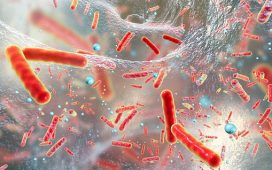Funding for science, research and the environment to underpin some of the Albanese Government’s big policy promises have begun to be rolled out in Treasurer Jim Chalmers’ 2023-24 budget.
But the President of the Australian Academy of Science, Professor Chennupati Jagadish described the investment in science and research as “lamentable” and called for policy to lift R&D from 1.79% to 3% “and an independent review of the entire science and research system.“
In the science and research sectors AUKUS, climate, energy and the environment were the main areas of focus in the budget speech.
“Australia’s biggest opportunity for growth and prosperity is the global shift to clean energy,” Chalmers said.
“By acting now, our resources, our researchers and our regions can help power the world.
“That’s why we are investing $2 billion in a new “Hydrogen Headstart” program, so Australia can be a world leader in producing and exporting hydrogen power.
“To realise this vision, we’re making targeted investments in green industries, as well as in technology and other value‑adding areas.
“This will create new opportunities across our economy…and so will our historic and vital investment in defence and national security.”
The cost of the AUKUS programs is becoming clear with spending of $4.2 billion over 10 years from 2023–24 (and $482.7 million per year ongoing) to support the establishment and ongoing operation of a new Australian Submarine Agency within the Defence portfolio to manage Australia’s nuclear-powered submarine program.
Resources Minister Madeleine King said: “The road to net zero runs through the resources sector.”
“We’re developing the critical minerals industry needs to make batteries and other green technologies – an integral part of our plan for Australia to become a renewable energy superpower.”
Water policy is likely to remain a thorn in the sides of all policy makers with the government funding the first full review of the Murray Darling Basin Commission, and abandoning some large dam and irrigation projects.
Science and Technology Australia described the budget as : “A series of strategic investments in frontier technologies, quality science advice, and growing new science-driven businesses in advanced manufacturing.”
STA said: “These investments, coupled with an array of thoughtful major reviews underway, are steadily designing a blueprint for the government to deliver its 2022 election pledge to deepen R&D investment to tackle Australia’s major economic challenges.”
STA President Professor Mark Hutchinson said the 2023 budget “lays the foundations for a clever, strategic build-up of Australia’s investments in science in coming years”.
Universities Australia Chief Executive Catriona Jackson said: “The budget strikes a balance between cost-of-living relief and fiscal repair.” She welcomed funding for new university placements.
“We need more skilled workers and more research and development, not less, but we can’t do it without more investment from government.
“We recognise not everything can be funded and tough decisions must be made. But the fact remains: universities make the nation stronger and more prosperous.”
Echoing those sentiments Kylie Walker, CEO of the Australian Academy of Technological Sciences and Engineering, said the Budget contains some welcome measures for science and technology but falls short on the strategy and investment critically needed to grow wealth and wellbeing by making Australia a global leader in research and innovation.
AUKUS
$4.2 billion over 10 years from 2023–24 (and $482.7 million per year ongoing) to support the establishment and ongoing operation of a new Australian Submarine Agency, within the Defence portfolio, to manage Australia’s nuclear-powered submarine program.
This includes $15.3 million over 10 years from 2023–24 (and $1.5 million per year after) to establish an independent monitor and adviser to provide independent assurance for the nuclear-powered submarine program through periodic health-checks and proactive advice.
$127.3 million over four years from 2023–24 for 4,000 additional commencing Commonwealth supported places at universities and other higher education providers for courses that support the skills requirements of the nuclear-powered submarine program, including STEM and management disciplines. Of these places, at least 800 will be allocated to South Australian universities with the remainder to be allocated through a competitive process.
The government will also provide Australian Naval Infrastructure Pty Ltd with an equity injection over five years from 2023–24 to commence early construction and design works for a submarine construction yard in South Australia and to design the skills and training academy associated with it.
Climate
$103.7 million for the Murray-Darling Basin Authority to prepare for and undertake the first statutory review of the Murray-Darling Basin Plan 2012, with updated science to enable the basin to adapt to the impacts of climate change.
$28.0 million over two years to develop Australia’s first National Climate Risk Assessment and a National Adaptation Plan to understand the risks to Australia from climate change, invest in a plan to adapt to those risks, and commission an independent review of the Australian Climate Service.
$450.3 million over four years from 2023–24 (and a further $149.7 million over three years from 2027–28) to establish the Safeguard Transformation Stream to support decarbonisation investments at trade-exposed industrial facilities covered by the Safeguard Mechanism.
$400.0 million over four years from 2023–24 to establish the Industrial Transformation Stream to support reduction of direct and indirect emissions at existing industrial facilities, or clean energy development, in regional Australia.
Critical technologies
Government will provide $116.0 million over five years from 2022–23 to support the development of critical technologies in Australia to drive economic growth, boost technology industries and support the creation of new jobs.
$101.2 million over 5 years from 2022–23 to support businesses to integrate quantum and artificial intelligence (AI) technologies into their operations, through:
Critical Technologies Challenge Program, which will support projects that use critical technologies to solve significant national challenges, and will commence with a focus on projects that use quantum computing.
Extending the National AI Centre and its role in supporting responsible AI usage through developing governance and industry capabilities.
Establishing an Australian Centre for Quantum Growth to support ecosystem growth and commercialisation in Australia’s quantum industry.
Supporting small and medium enterprises’ adoption of AI technologies to improve business processes and increase trade competitiveness.
$14.8 million over four years from 2023-24 to establish the Powering Australia Industry Growth Centre to develop advanced technology and skills as part of the government’s Australian Made Battery Plan.
Australian Nuclear Science and Technology Organisation (ANSTO) in its provision of nuclear medicines to Australians, including:
$44.5 million over three years from 2023–24 to support ANSTO to manage the planned upcoming maintenance shutdown of its nuclear reactor, including the importation of nuclear medicine that would ordinarily be produced by the reactor.
Funding over 10 years from 2023–24 for ANSTO to construct a new nuclear medicine manufacturing building, as well as ongoing maintenance of the current ageing facility.
Energy
Hydrogen Headstart
$2.0 billion for the establishment of a new Hydrogen Headstart program, which will provide revenue support for investment in renewable hydrogen production through competitive production contracts, including funding for the Australian Renewable Energy Agency and the Department of Climate Change, Energy, the Environment and Water to support the development and operation of the program.
$5.6 million in 2023–24 to analyse the implications for Australia of intensifying global competition for clean energy industry, and to identify actions before the end of 2023 to further catalyse clean energy industries, ensure Australian manufacturing competitiveness and attract capital investment.
Environment
The government abandoned some water projects including the Dungowan Dam project near Tamworth in NSW; the Emu Swamp Dam and Pipeline project near Stanthorpe in south west Queensland; the Southern Forests Irrigation Scheme near Manjimup in WA; and the Fingal Irrigation Scheme in Tasmania.
$341.2 million over five years from 2023–24 to protect nature, threatened species and habitats and to maintain delivery capability through activities like the BushBlitz, Natural Resource Management (NRM) partnerships and on-ground conservation and recovery activities.
$50.0 million over five years from 2023–24 to conserve and restore Ramsar listed wetlands and catchments.
$48.0 million over five years from 2023–24 to continue management of Australia’s state-managed World Heritage listed properties.
The government has also provided $262.3 million for Commonwealth National Parks, such as Kakadu and Uluru-Kata Tjuta, to protect their natural and cultural heritage value.
$8.3 million over four years from 2023–24 (and $1.3 million per year ongoing) to establish a sovereign green bond program to raise capital for environmental and climate change related programs.
Great Barrier Reef
$88.1 million over four years from 2023–24 (and $29.7 million per year ongoing) for necessary increases to Australian Institute of Marine Science (AIMS) workforce to enable it to continue delivering on projects to protect and restore the Great Barrier Reef.
$40.4 million over four years from 2023–24 (and $11.2 million per year ongoing) for enhancement of AIMS’ existing science and technology capabilities to improve the scale, scope and speed of marine monitoring and data analysis.
$31.9 million over four years from 2023–24 (and $2.3 million per year ongoing) for critical electrical infrastructure upgrades and refurbishment of unusable and unsafe lab and office facilities.
• $3.0 million over four years from 2023–24 (and $300,000 per year ongoing) for the replacement of AIMS’ small research vessel.
Health
In 2023–24, $42 million (and $45 million next year) for the establishment of the Australian Centre for Disease Control.
The Government will donate $6.0 million over three years from 2023–24 to The Royal Children’s Hospital’s Good Friday Appeal in 2023, 2024 and 2025. Funding will support world-class medical care for sick children and their families through treatment, research, leadership and training.
Space
The government will refocus support for the Australian space industry by maintaining investment in successful space programs and providing appropriate regulation for the industry. Funding includes $34.2 million over three years from 2023–24 for the Australian Space Agency to continue to lead the national policy and strategy coordination of Australia’s civil space sector activities.
STEM
The government will also extend the Women in STEM Cadetships and Advanced Apprenticeships Program for two years to 30 June 2027, to provide new and existing participants more time to complete their science, technology, engineering and maths qualification while simultaneously continuing their careers.
Universities
Universities Australia said key measures for the university sector include funding for 4,000 additional Commonwealth supported places to support the skills requirements of the AUKUS program.
$91.3 million for additional psychology placements, including 500 psychology post-graduate placements; 500 one-year internships, and 2,000 supervisor training sessions.
$50.2 million to establish the Primary Care and Midwifery Scholarships program to support registered nurses and midwives to undertake post-graduate study and improve their skills.
$31.6 million to trial enhanced training arrangements to support international medical students working in rural and remote locations.
$10.7 million to boost the primary care nursing workforce by creating 6,000 primary care clinical placements and providing incentives to clinics employing returning nurses.
$4.2 million to support James Cook University to deliver the Australian General Practice Training program.
![]()











